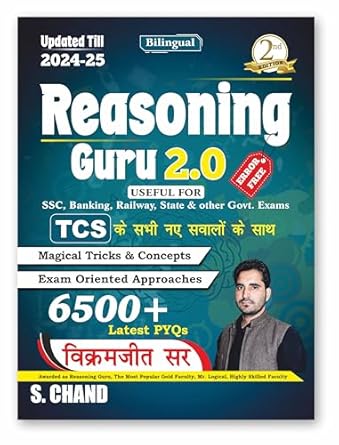Concept of Inclusive Education - Syllabus and Study Material
Inclusion is really about practical changes that we can make so that children with diverse backgrounds and abilities, as well as all other children, can succeed in our classrooms and schools. These changes will not merely benefit the children we often single out as children with special needs, but all children and their parents, all teachers and school administrators, and everyone from the community who works with the school.
What is “Inclusive”?
Over the years, the term “inclusive” has come to mean “including children with disabilities” in “regular” classrooms for children without disabilities. In this Toolkit, “Inclusive” means much more.
“Inclusive” does include children with disabilities such as children who have difficulties in seeing or hearing, who cannot walk, or who are slow to learn. However, “inclusive” also means including all children who are left our or excluded from school. These children may not speak the language of the classroom; are at risk of dropping out because they are sick, hungry, or not achieving well; or they belong to a different religion or caste, children affected by HIV/AIDS. It also means that all girls and boys who should be in school but are not, especially those who work at home, in the fields, or elsewhere (migrants) and who have paying jobs to help their families survive. “Inclusive” means that as teachers, we have the responsibility to seek out all available support (from school authorities, the community, families, children, educational institutions, health services, community leaders and so on) for finding and teaching all children.
Moreover, in some communities, all children may be enrolled in school, but some children still may be refrained from participating and learning in the classroom. For instance, they may be children:
For whom a lesson or textbook is not written in their first language.
- Who are never asked to contribute;
- Who never offer to contribute;
- Who can ‘t see the blackboard or a textbook or can ‘t hear the teacher; or
- Who are not learning well and not attempt is made to help them.
These children may be sitting at the back of the classroom and may soon leave altogether (drop out)…! As teachers, we are responsible for creating a learning environment where all children can learn, all children want to learn, and all children feel included in our classrooms and schools.
Barriers to Inclusive Learning
Child: Homelessness and the need to work; Illness and hunger; Birth registration; Violence; Stigma of HIV/AIDS, Migratory Population.
Family: Poverty; Conflict; Inadequate caring; HIV/AIDS.
Community: Gender discrimination; Cultural differences and local tradition; Negative attitudes
School: Location; Scheduling; Uninteresting School Environment, Facilities; Teacher Preparedness; Class Sizes, Resources and Workload.
Challenges to Diversity
Having many different children with many different backgrounds and abilities in a single inclusive classroom is challenging. We need to consider what each child needs to learn and how he or she learns best. We need to discover how to get all of the children to want to learn together happily. Three challenges that can prevent children from “learning together are bullying, prejudice, and discrimination.” Learning how to deal with these challenges in on inclusive classroom is one of the most important jobs a teacher must do.
Bullying
Bullying is one form of violence. To create a healthy and protective school environment, we will learn other forms of violence that may exist in a school, how to map violence in the school, and how to develop effective school policies and activities against violence. In this Booklet, we will look at bullying specifically, since threats and fear can prevent children from learning in our inclusive, learning-friendly classrooms.
When we think of bullying, usually we think of one child or group of children (the offenders) threatening another child (the victim) oftentimes because the victim is different in some way. They may be better than the offenders in terms of learning (they get better grades); they may be from a different cultural group, such as having a different religion; or they may just be poor. The behavior of adults and teachers, not just children, also can be considered bullying. There are several types of bullying; for Example:
- Physical bullying, such as being beaten by peers, a teacher, or caregiver;
- Intellectual bullying where children’s ideas are ignored or not valued;
- Emotional bullying due to low self-esteem, harassment embarrassing moments in school. Or rewards withdrawn, which may be related to intellectual threats;
- Verbal bullying, such as name-calling, insulting, repeated teasing, and racist remarks;
- Indirect bullying like spreading rumours or excluding someone from social groups; and
- Cultural or social bullying stemming from prejudice or discrimination due to differences in class, ethnic group, caste, sex, etc.
For teachers, it is difficult to deal with bullying because it often takes place outside of the classroom, such as on the way to school or in the play are. However, the effects of bullying usually influence how well the abused child leans in our classroom. Observation is a key skill, and we need to observe children during play as well as in the classroom.
Signs of bullying include:
- Children who suddenly lose confidence;
- Children who avoid eye contact and become quiet;
- Those who achieve poorly but were learning well previously; and
- Those who begin to attend school irregularly or begin to have unexplained headaches or stomach - aches.
Tips on Handling the Bullied Student
Support, which may appear to the student as sympathy, should be shown in private and not in front of the other students, as this may cause further discomfort to the student. She may start feeling that “everyone knows I can’t handle the situation.”
Assure the student of your constant vigilance and confidentiality of the whole incident. Only those people why may be of further assistance are to be informed about the incident.
Encourage the student to express his feelings and vent his anger. Explain to him that it is not his fault that he is being bullied.
Encourage him to inform you about any further incident as and when they occur.
Help him from a group of friends. Students have a much lesser chance of being bullied when they move in groups.
Larger Characteristics of an Inclusive, Learning-Friendly Classroom
| Traditional Classroom | Inclusive, Learning-Friendly Classroom | |
| Relationships | Distant (the teacher addresses students with his/her back towards them) | Friendly and warm. The teacher sits next to and smiles at the child with a hearing impairment. The parent-helper praises this child and assists other children. |
| Who is in the classroom? | The teacher as well as students with quite similar abilities | The teacher, students with a wide range of backgrounds and abilities, and other such the parent-helper |
| Seating arrangement | Identical & traditional seating arrangements in every classroom (all children seated at desks in rows; girls on one side of the room, boys on the other) | Different and innovative gender inclusive seating arrangements, such as girls and boys sitting together on the floor in two circles or sitting together at tables |
| Learning materials | Textbook/exercise book, blackboard for teacher | Varicty of materials for all subjects such as math materials made from newspapers, or posters and puppets for language class |
| Resources | The teacher is interacting with children without using any additional teaching materials. | The teacher plans a day in advance for the class. She involves the children in bringing learning aids to the class and these aids do not cost anything. |
| Evaluation | Standard written examinations | Authentic assessment; Observations; Samples of children’s work over time such as portfolios |
Encourage him to inform his parents also often students do not wish to tell any adult, including their parents about what is happening.
Set information from other sources about the bullying incident so that when you talk to the bully, you do not have to name their particular student. Do not attempt getting an apology from bully. This may also worsen this situation.
If you feel the need, get professional help for the bullied students as the bullying can be very traumatic. Let the help b a little more than a little less.
A follow up of the students should be done to keep his confidence intact. Assure him that you and the school system are there for him if and when required.




0 Comments